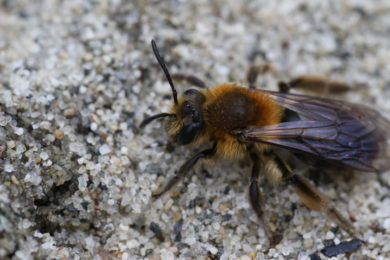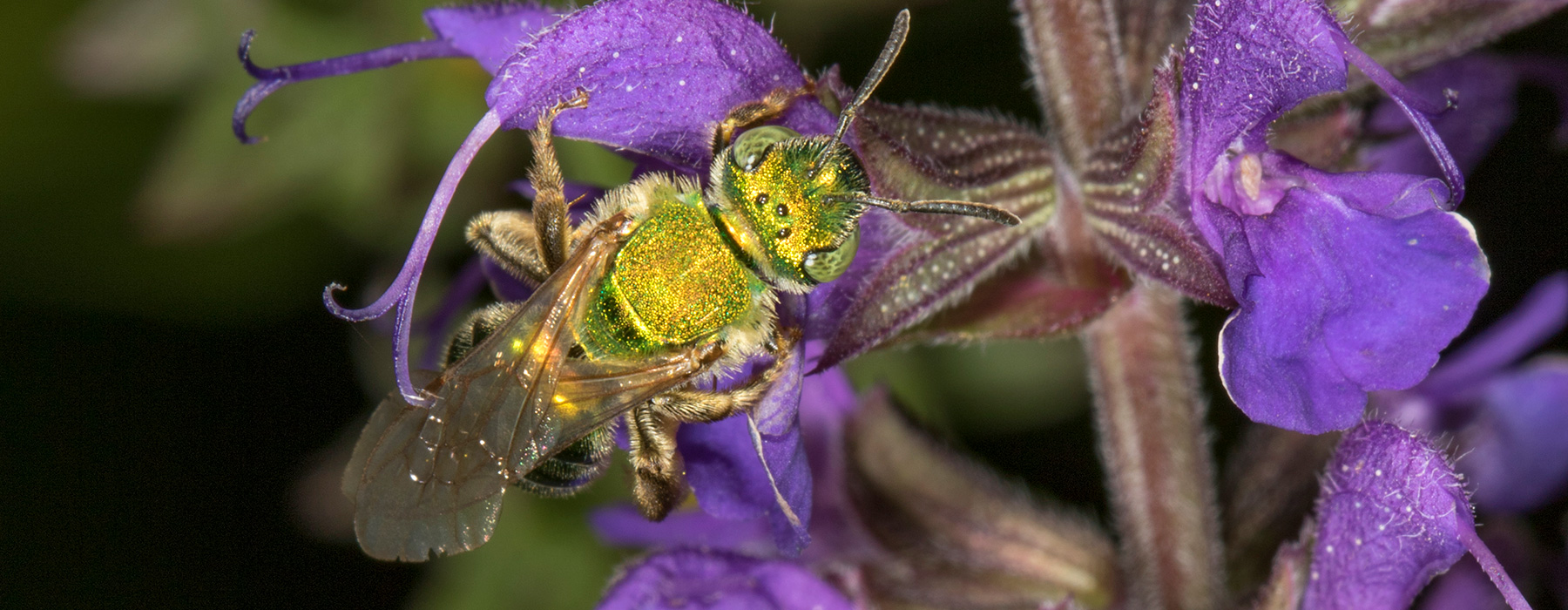Did you know Vermont has more than 350 species of wild bees? From 2019 through 2022, the Vermont Wild Bee Survey explored every nook and cranny of the Green Mountain State to document our ever changing bee fauna. While species remain to be found and much is still unknown, even about the common species, the Wild Bee Survey has succeeded in producing a robust baseline of the bees currently present. We have also digitized and analyzed the vast majority of the historical museum specimens known, adding a invaluable historical perspective.
Using this project on iNaturalist.org and our online guide to VT's bees, we are continuing to collect data about Vermont bees at an unprecedented scale. This data has recently been summarized and in the first ever State of Vermont's Wild Bees.

Female Dunning’s Mining Bee (Andrena dunningi) © Spencer Hardy
Before we started, a checklist of species did not exist for the state, making it very difficult to know whether Vermont’s bee populations are healthy or declining. The Vermont Wild Bee Survey represents the first step in assessing bee populations across the state. Starting in 2019, volunteers and project staff intensively surveyed Chittenden County, amassing thousands of specimens, including dozens of species never before recorded in Vermont.
State of Wild Bees Report 2022
Over 350 wild bee species call Vermont home, but 55 of those species urgently need conservation action. A new report from the Vermont Center for Ecostudies (VCE), in collaboration with the Vermont Fish & Wildlife Department (VFWD), provides the first comprehensive assessment of Vermont’s bees. The Vermont State of Bees report, released today by biologists working on VCE’s Vermont Atlas of Life, was created using more than 55,000 observations of bees from hundreds of community scientists and biologists across the state.







